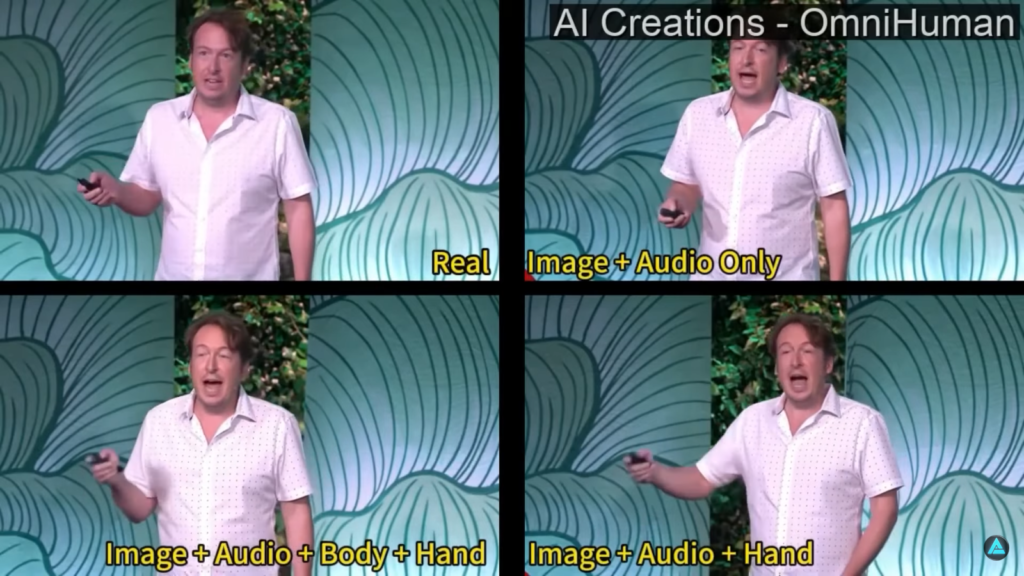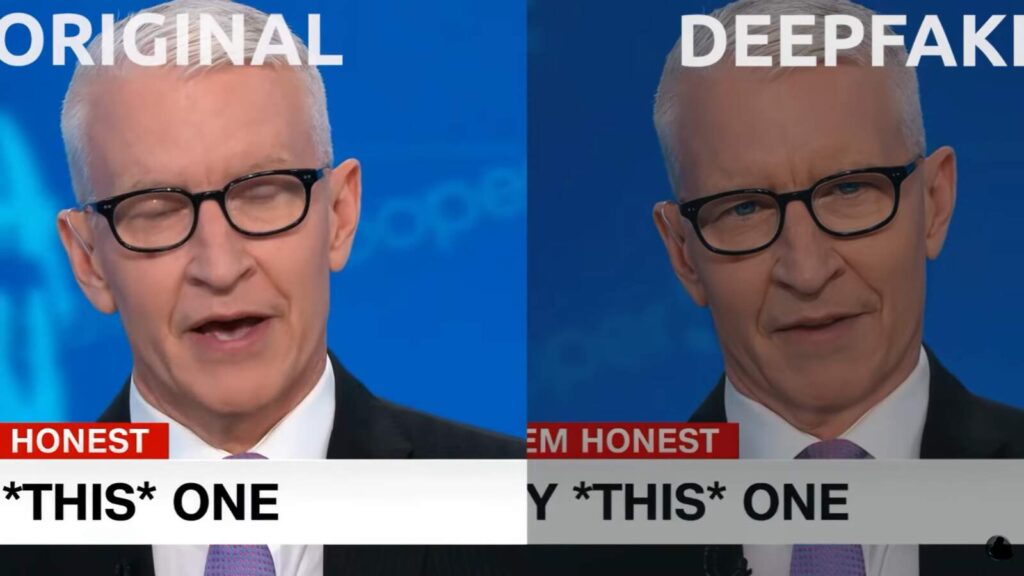ByteDance’s OmniHuman: The Next Level of AI Deepfakes

The parent company of TikTok, ByteDance, recently launched groundbreaking AI technology, OmniHuman. The new model transforms a single picture into a life-sized video showing full-body motion, realistic gestures, and singing abilities. Deepfake technology advances create substantial dangers for creative media production and the distribution of false information.
What is OmniHuman?
OmniHuman marks an essential advancement in artificial intelligence technology for video production. The core distinction between OmniHuman deepfakes and older generations of deepfakes relies on OmniHuman operating on single photos instead of multitudes of reference materials. The system extends beyond simple face-swapping or lip-dubbing effects because it executes detailed full-body movement animations duplicating human physical capabilities.
The innovative tools found in OmniHuman extend the current limits of synthetic media production. According to ByteDance, they applied this model to nearly 19,000 hours of video footage by using the entire content available on TikTok. The large dataset provides AI models with the ability to create videos with authentic appearances, including perfect audio and motion coordination.

How Does OmniHuman Work?
The basic operational method of OmniHuman applications uses “Omni conditions.” This processing method enables the AI system to simultaneously receive and evaluate text and audio signals alongside body position data. The AI system achieves natural video generation through its ability to process various signals, which helps it learn human expression patterns.
With a single picture and an audio input, the model generates complete, realistic video content of the person performing the audio. The generated footage demonstrates such realism that observers would accept it as genuine without suspicion. A YouTube sample from ByteDance depicts an artificial Einstein delivering a lecture using simulated gestures while speaking as if he were instantly present today.
Applications and Implications of OmniHuman
The remarkable capabilities of this technology result in substantial moral dilemmas and numerous operational questions. The capability to generate realistic videos using small amounts of provided material presents an immediate danger for spreading false information, conducting malicious political operations, and executing fraudulent schemes. The existing use of deepfake technology triggered the production of false content, such as synthetic political endorsements that never faced real-world validation.
The Taiwan election witnessed the spreading of fake audio through deepfake technology, which surfaced fake endorsements from a local politician for a pro-Chinese candidate. The creation of false video content featuring celebrities sponsored bogus investment schemes for financial crime. Based on available reports, the combination of AI-generated content resulted in more than $122 billion in financial losses throughout 2023.

The Need for Regulation
ören firms have started requesting legislation because of the concentration of misuse potential within deepfake technology. Multiple U.S. states have introduced legal measures targeting AI impersonation through deepfakes to decrease the associated risks of such technology. The government of California is developing new laws that will give court officials the power to request deepfake content removal and demand financial penalties for producers of deepfakes.
The detection of premium-quality deepfake content proves extremely difficult. Social media platforms and search engines have tried to implement detection tools based on artificial intelligence, yet they still face an overwhelming volume of AI-generated content. Research data showed a yearly deepfake encounter rate among 60%, while 72% reported continuous concern about such deceptive content experiences.
OmniHuman will face the following pathway as its future develops.
ByteDance keeps OmniHuman unavailable to the public, sparking speculations about what applications it could pursue in future years. The fast development within AI research groups indicates that similar technologies should appear from independent laboratory work or open-source platforms. Generative AI technology has become popular, thus leading to multiple advancements in synthetic media.
The experts view OmniHuman as a potential solution for educational purposes. This technology could deliver genius educational content through artificial resurrections of historical figures, including Marilyn Monroe and Humphrey Bogart. TikTok creators frequently use virtual avatars to continue creating video content during their free time.

Potential Risks and Ethical Concerns
The benefits of artificial intelligence-generated videos cannot hide the dangers threatening the public’s security. Progress in technology goes hand in hand with the increased probability that people will believe in artificial video creations. The potential risks become particularly dangerous when the technology affects political situations, which could result in severe damage.
Samantha G. Wolf, among experts, warns about disruptions from believed-real yet fake video depictions of political figures and corporate leaders. Such conversations about ethical practices must address this issue because the stakes become increasingly profound.
ByteDance implements its unique technique for AI video creation through OmniHuman.
ByteDance introduces OmniHuman, which deviates from mainstream animation practices because these former methods had insufficient potential for video creation scalability. The company minimizes data loss through multi-modal training, thus creating better-quality video outputs. The model supports designing content for different aspect ratios, allowing it to create videos that match TikTok’s vertical orientation and traditional widescreen video standards.
The OmniHuman platform allows users to make changes to recorded videos through its edit feature, which enables them to adjust the body movements, facial expressions, and gestures of all recorded content. An additional feature of this technology generates new concerns about how it could be misused to develop deceptive political ads or false endorsement material.

The Competitive Landscape
ByteDance faces competition from other companies active in its industry. Google, Meta, and Microsoft have joined forces to develop similar technologies. The substantial database ByteDance gathers from TikTok positions the company at the forefront of AI-generated video content. AI specialists casually share that anyone who uploads TikToks automatically provides information for OmniHuman training.
The development trajectory of AI technology has major effects on content creation processes, misinformation propagation, and public trust. Controlling innovation against ethical responsibilities will shape how we handle the emerging synthetic media domain.
Conclusion: Navigating the Future of AI Deepfakes
Information technology innovations demonstrated through OmniHuman display the quality of deepfake advancements. Society faces significant challenges in resolving the risks and ethical dilemmas that emerge from exciting creative capabilities. The future requires support for developing responsible guidelines to detect and control powerful technologies’ proper use.





One thought on “ByteDance’s OmniHuman: The Next Level of AI Deepfakes”